Just 105 Miles South of Key West
A piece of my cultural heritage
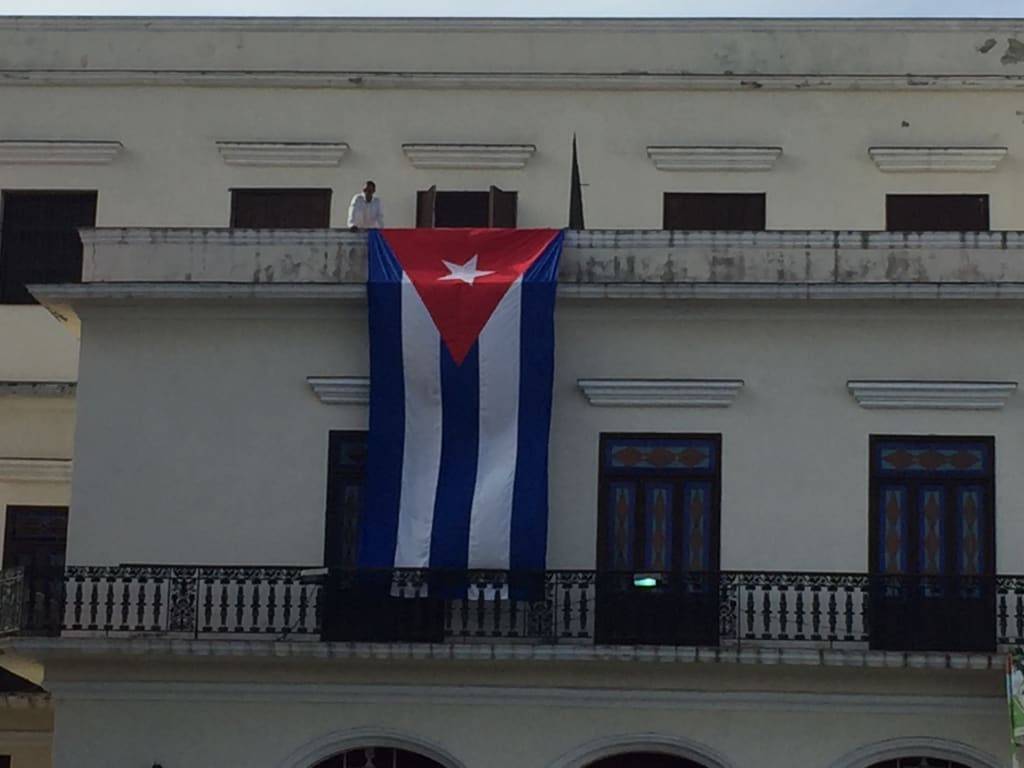
A short window of time opened during the Obama administration allowing Americans to visit Cuba for family or educational reasons. To celebrate our 25th wedding anniversary in 2017, my husband and I booked a cruise and tour in Havana. My father's side of the family came from Cuba, and I have always been curious about his homeland. Although I don't speak the language, just being there would rekindle interest in my heritage.
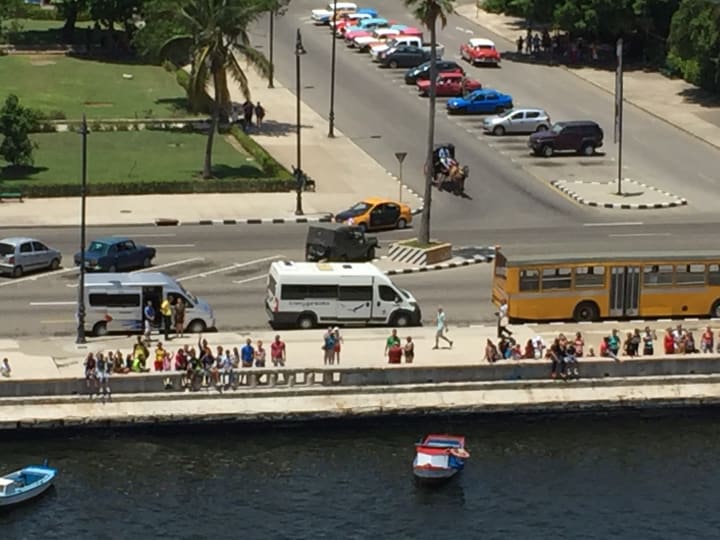
People along the boardwalk were excited to see us coming in. Tourists brought cash with them, and artisans, cooks, and entertainers looked forward to our arrival. People hawking wares or drawing pictures of us in the courtyards were deeply appreciative of cash tips. We were allowed to join only the government-run tours to see just what the government wanted us to see. There were policia on every corner keeping a close on tourists and their activities. Tour guides and bus drivers, once they were far enough away from the buses, would give us small hints of what life was really like behind the scenes. They were given a script to read, and they were being monitored on the buses.
As we walked by the cafes and bodegas, the smell of authentic Cuban coffee or arroz con pollo kept us in a Latin mood. Shopkeepers lured tourists in with their doors open, smiling and greeting us with broken English. Cuban bread, flan, coconut everything was there for us to partake.
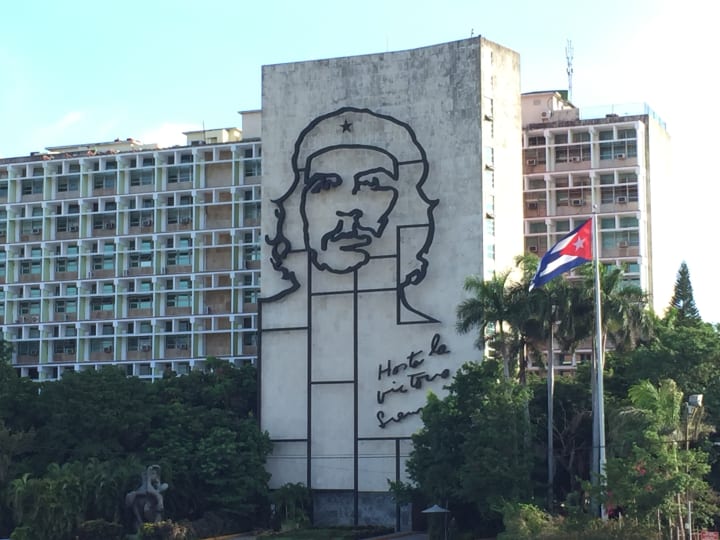
A whole generation of people do not remember the freedom Cubans had between 1898 and 1952 before the dictator Batista and communist leader Castro changed the direction of the country. Che Guevara first believed in communist Castro's policies for the country, but as he saw the abuse of power, he relinquished his citizenship. He is considered a martyr for advocating a socialized Cuba where people's needs would be met while having the opportunity to prosper. While all the people do have access to medical care and free college, they often lack the basics such as water and power. It also takes a long time to see a physician, and there's a waiting list for college. Current President Miguel Díaz-Canel was installed in 2021 after Raul Castro (that last of that family line); perhaps after the past 60 years the people can experience progress and see freedom on the horizon.
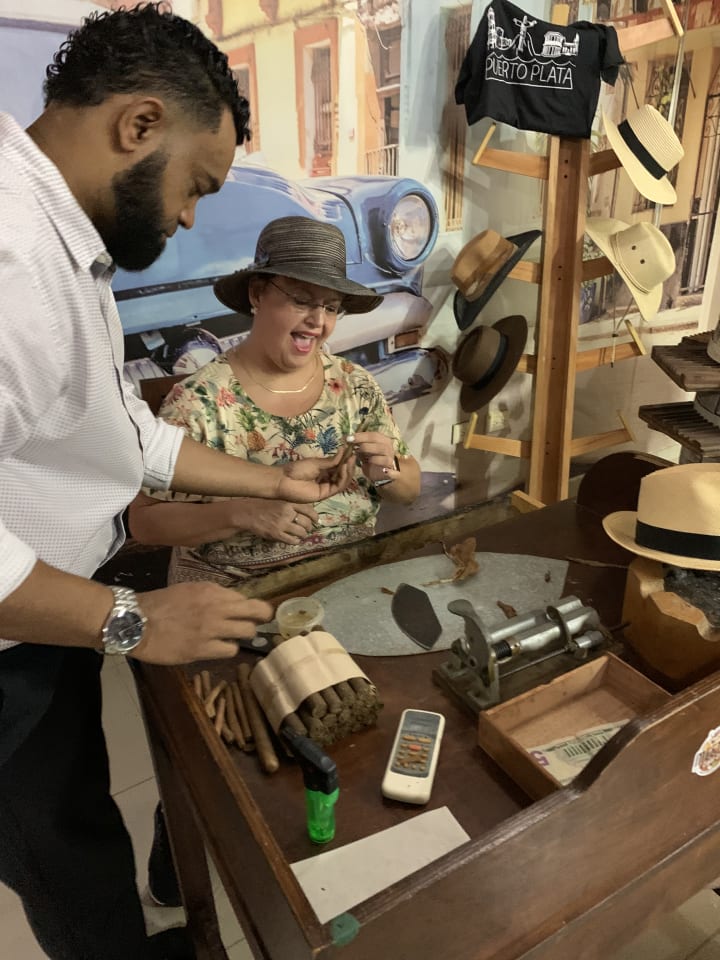
Cuban soil is the right consistency, and the humid climate is perfect to grow the best tobacco leaves. Cigars remain a big export for the country. My great-grandfather emigrated to Key West in 1898 (around the time of Cuba's independence from Spain) and rolled cigars for a living. From Key West, many Cubans moved to the Tampa/Ybor City area to continue the cigar industry because it was easier to reach by boat. Both my grandmothers worked in the Ybor City cigar factories, hand-rolling cigars as the leaves stained their hands. My father told us the story about his sitting in the corner on an elevated shelf of the rolling room, reading the Spanish-language newspaper to the rollers in the 1940s. This helped break up the tedium of rolling box after box of these premium cigars. As the cigar industry dries up, the demand for the iconic Cuban cigar is still coveted worldwide.
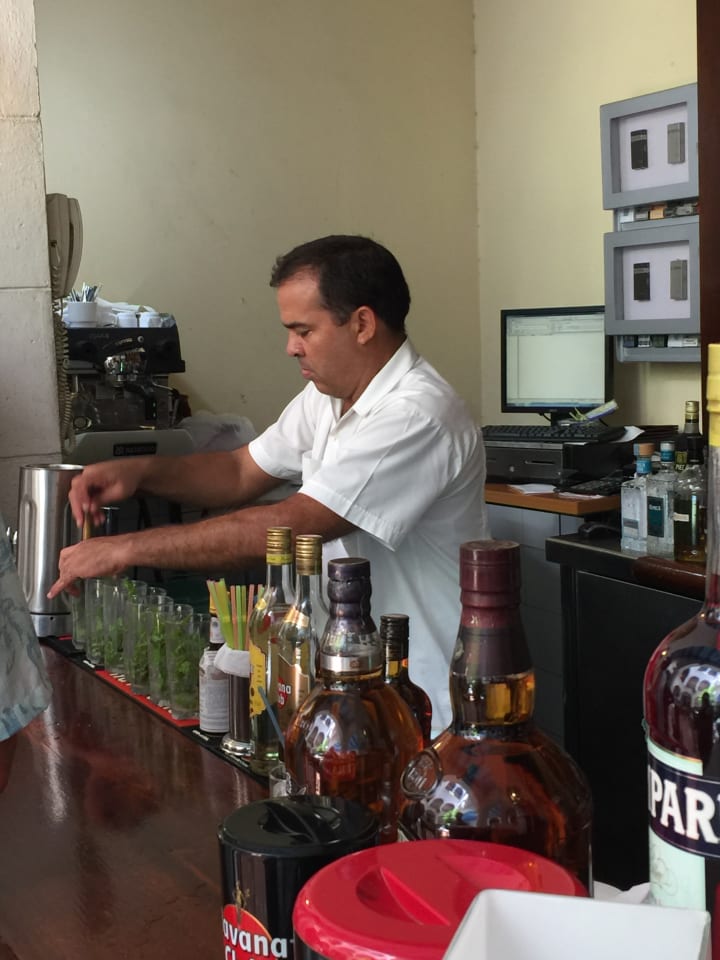
Mojitas were born in Cuba. A good el cantinero (bartender) took his time to make us the most refreshing drinks. His spotless guayabera (the type of shirt he's wearing) and haircut reminded me of my father in his younger years. The areas for tourists in Havana were spectacularly clean and inviting.
While the soil and climate of the island is good for tobacco, it is also excellent to grow the sugar cane from which Cuban rum is made. Notice the landline on the wall. Cell service is not universal throughout the country. Since we visited in 2017, cell service has spread and is more available, especially in hotels and places where the tourists stay.
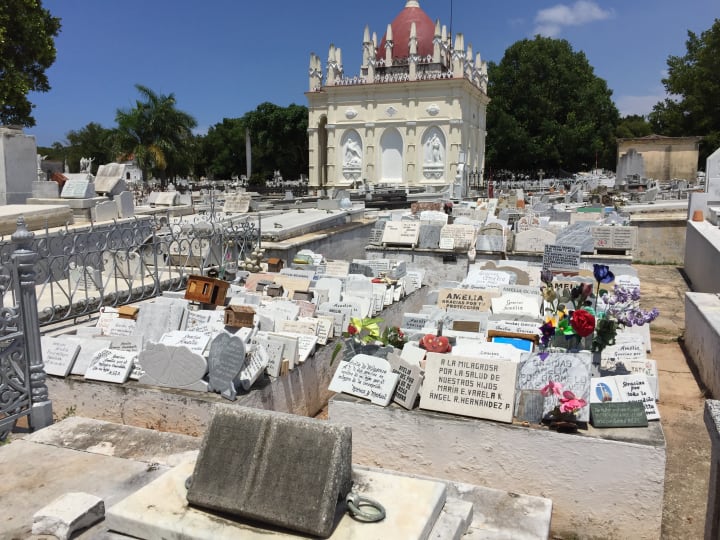
Cubans are proud of their cultural roots. They celebrate Día de los Muertos (Day of the Dead) on November 1 and 2 as the other Latin countries do. It's a day of celebration for loved ones who have passed. Food, music, candles, parades, skeletons, and festivals are expected as people remember their ancestors. There are over 11 cemeteries on the small island, with graves and mausoleums packed together. The resting sites are ornate and often feature statues, artwork, gargoyles, or gates with locks. Many graves, despite their heaviness, have been washed away by storms.
The grave of Amelia Goyri de la Hoz is a sacred site where Cubans firmly believe a miracle occurred in 1901. Amelia was pregnant with her first child, but she and the baby died during childbirth. As was custom at the time, the baby was placed between the legs of the mother, near the feet. When they opened the coffin 13 years later to inter another family member, they discovered the baby was in the mother's arms. She is referred to as “La Milagrosa" (The Miracle Woman) and is a symbol of motherhood. People come from all over the world to pray for her and leave mementos of respect and flowers at the site. The poem beside her grave starts with “You were blessed Amelia/ without a doubt, by the Lord/ for all the love/ you felt when you were alive.
”
In addition to the respect, many ask Amelia for requests for healing. According to our tour guide, there is a certain ritual that must be done that follows what Amelia's husband would do. There's knocking on the grave 4 times to say "Wake up, love," prayers and requests, the walking around the gravesite backwards, and finally leaving a token of devotion.
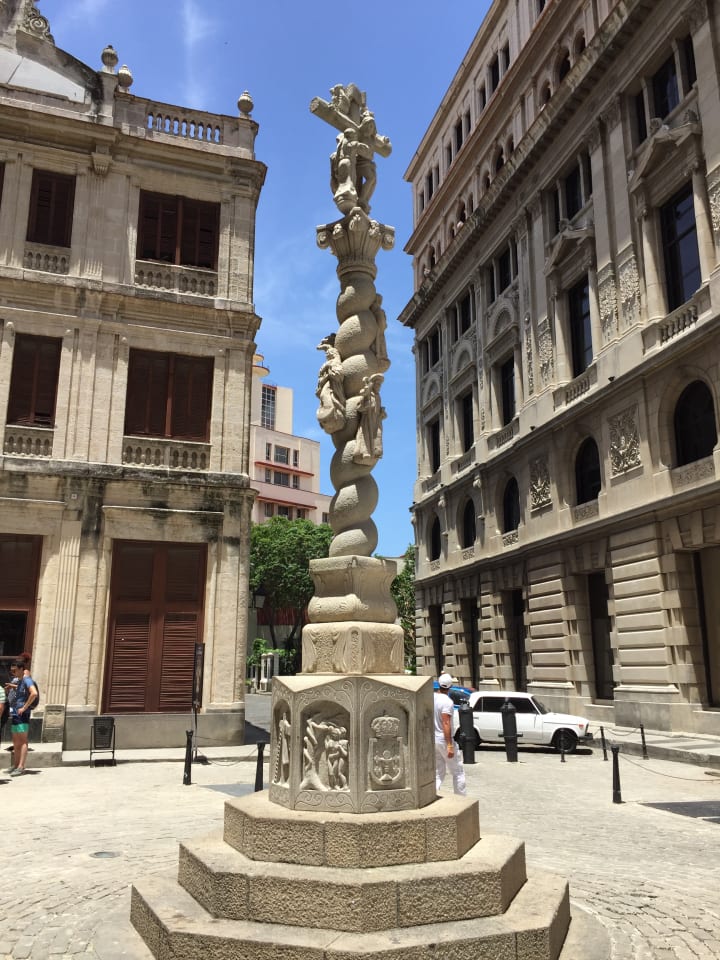
The architecture is simply breathtaking. The styles range from Baroque to neoclassical, with some art deco from the 1950s in smaller areas. However, the buildings are empty within. The government can't afford to rebuild the insides of the buildings for occupation, and because of that, all that remain are these beautiful facades. This, to me, is representative of the country - many things are magnificent to the outside world, but in reality the insides are in shambles.
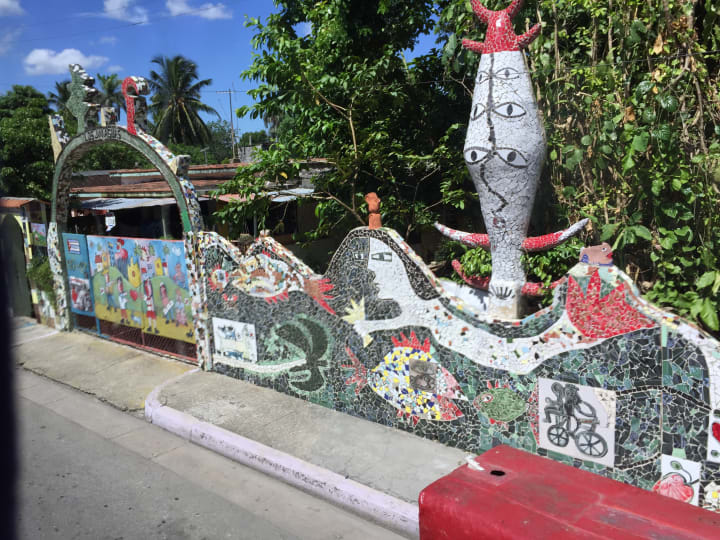
The art is eclectic and colorful. The house of Jose Fuster is not only the family home, but a museum as well. Most of the art is tile mosaics, but there is wrought iron and other media scattered throughout. People wander about the two-story building to catch the shadows that some of his sculptures make. His work can be seen different areas of Havana.
Kids draw chalk figures on the sidewalks and pavement, creating their own art. Many statues of Spanish-American war heroes dot the city, and the art inside people's businesses and homes are usually familial and have deeper meaning. I saw many depictions of chickens; in Latin cultures, chickens are symbols of prosperity. This is why they are allowed to run loose in Key West, Miami, and Tampa.
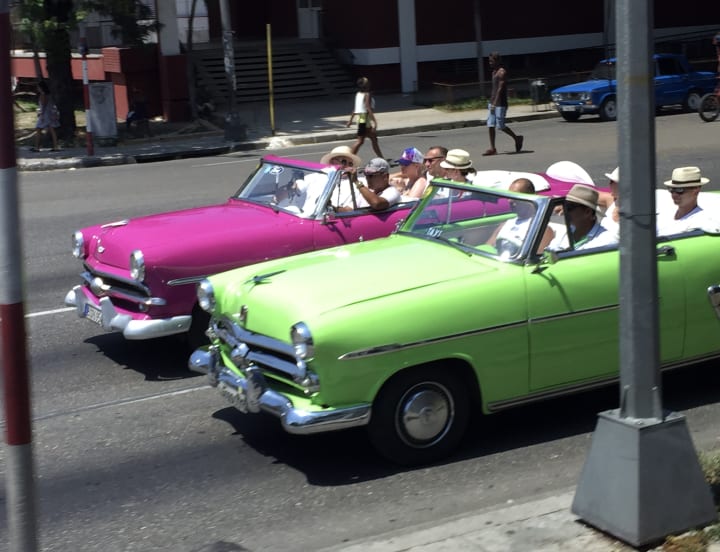
These ubiquitous cars zip by on the roads, flashy and classic, a nod to their past. The darker reality is that because of embargoes, most of these cars have remained here, frozen in time, since the 1950s. Without necessary parts because they're impossible to find or import, Cubans have resorted to creating their own fixes using scrap metal or engines from other machines. In the last 8 years, embargo restrictions have become looser and newer cars have been allowed to be imported. However, the prices of these new cars are out of reach for the regular working class.
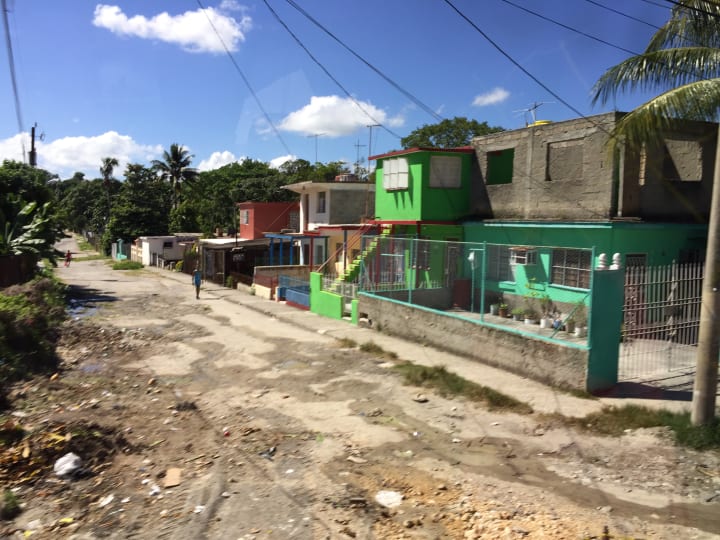
As we travelled on the tourist bus, we occasionally caught sight of where regular people lived. The houses were often run down, in partial construction, or destroyed, but people still lived in them. We saw typical indoor furniture outside. Storms have destroyed a lot of the infrastructure, and because of the embargoes, it takes a long time to get the materials they need.
This Caribbean island has been hit by many hurricanes. The most recent and destructive was Hurricane Ian in 2022, a category 4 storm. The entire power grid went down, and it took months for power to come back up. The people relied on family members from Florida to keep them going as essential supplies dwindled.
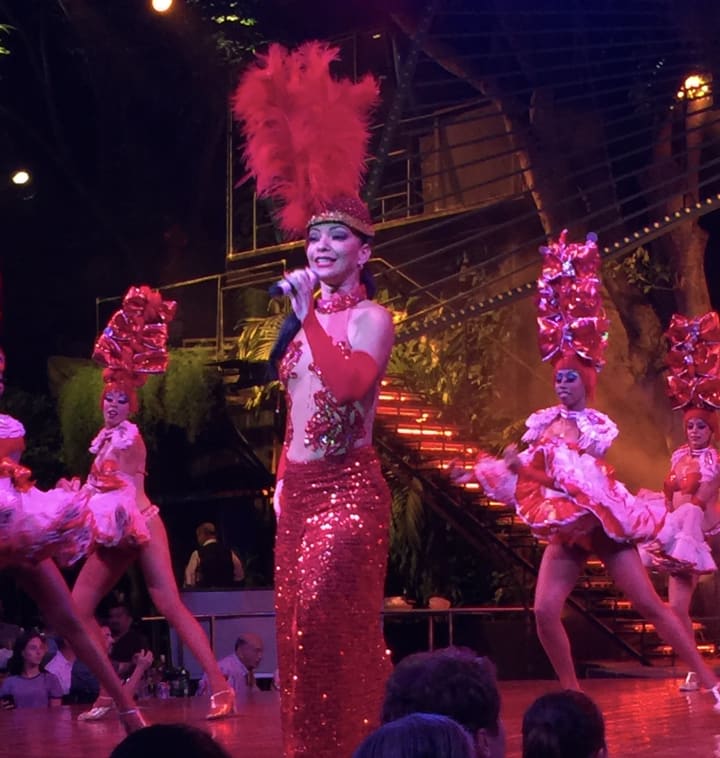
The performers at the Tropicana were incredibly talented. Opening in 1939, the Tropicana entertained the rich and famous throughout its first 30 years. Cuba was a popular destination for wealthy Americans wishing for a special getaway. Food and lodging were cheap, and Americans flocked to the island nation for cigars and rum, and perhaps a fling or two on the side.
In 1980, more than 125,000 Cubans came to Florida during the Mariel Boatlift as they escaped the Castro government. The strength and pride of the people are stronger despite the oppressive regimes and incessant embargoes. This Latin culture, blended with others, remains strong and resilient, just waiting for the right time.
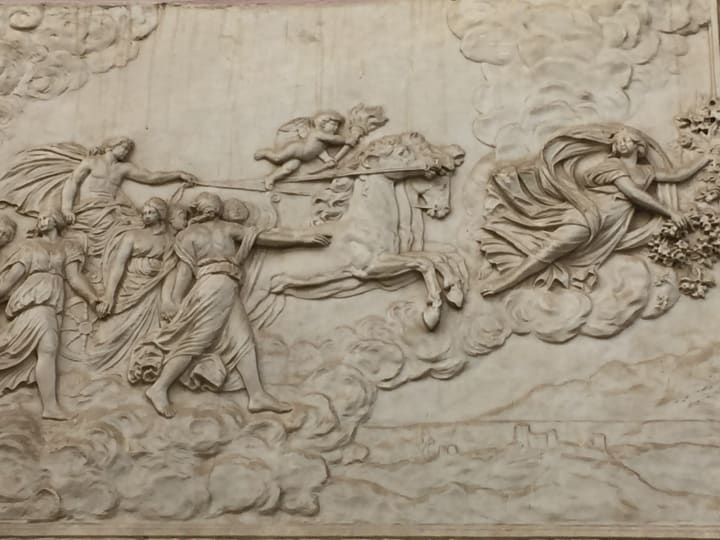
About the Creator
Barb Dukeman
After 32 years of teaching high school English, I've started writing again and loving every minute of it. I enjoy bringing ideas to life and the concept of leaving behind a legacy.
Enjoyed the story? Support the Creator.
Subscribe for free to receive all their stories in your feed. You could also pledge your support or give them a one-off tip, letting them know you appreciate their work.


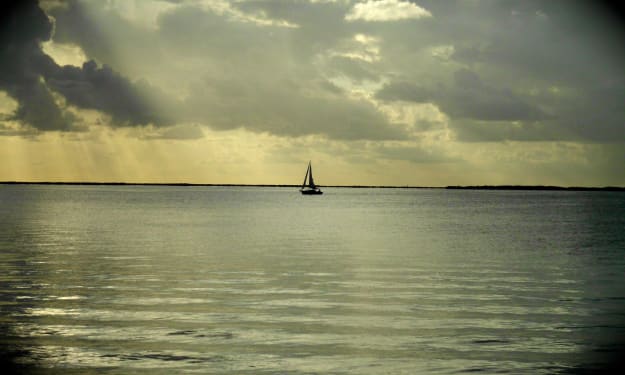



Comments (1)
Thanks for sharing.